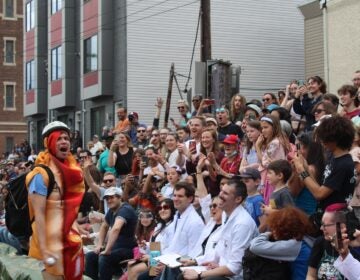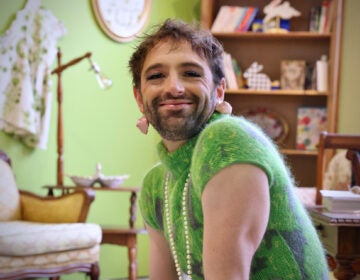In painting, sculpture and film, Léger saw cubism in the urban landscape
Today the Philadelphia Museum of Art opens a new exhibit of paintings by the first great painter of the modern urban city.
Fernand Léger was schooled in the cubist style that swept Paris in the 1910s, and saw that he didn’t have to impose fragmented cubist planes upon the world. Cities were already doing it for him.
“It is the experience, the feeling, the sensation of the city that he wants to capture,” said curator Anne Vallye. “He believes that experience of walking down the street is best captured by the means of painting. And what are the means of painting? Color, line, and shape. He wants to intensify the means of painting.”
“Léger: Modern Art and the Metropolis” is based on one of PMA’s prized possessions, Léger’s mural-sized masterpiece “The City” (1919), a raucous jumble of shapes, colors, fragmented text, and vertical lines that speak to the heady excitement, confrontation, and chaos of life in a thickly urban environment.
“The City” was painted when Léger was still a young man launching his career. Vallye expands from there, forward and backward, to show the shoulders Léger stood on (including a Picasso collage) and the wild places he would go.
Vallye’s ambitious presentation transforms the main gallery of the museum into a kind of Léger composition, with multiple film loops projected (Léger dabbled in silent film, particularly with the groundbreaking conceptual film “Ballet Mechanique”), several pieces of music playing, advertising posters dropped from the ceiling (the artist work extensively in graphic design), and theatrical sets and costumes with which Léger was involved. There is even a mechanically animated model of a theater set, because the sets worked in both space and time.
This was the era of the Ballet Russes, when theaters in Paris were experimenting with confrontational performance art. Léger was in the middle of it, creating bright, angular sets and costumes that competed with the actors for attention.
“All of these arts are urban arts. They were arts designed to be experienced by a number of people at the same time in a public space,” said Vallye. “He wanted to bring his art almost literally to the street, to the urban populace, outside the confines of the art gallery.”
The section of the exhibition about architecture shows Léger trying to do more than reflect the vibrancy of the urban city — he was trying to affect it. The way he carved and plotted space on canvases and theater stages was attuned to new design ideas coming out of The Netherlands, De Stijl. One of the visionary architects of Modernism, Le Corbusier, said “Of all the modern painters, Léger is the one whose paintings demand a modern architecture.””He was a leader, certainly, but one among many artists who all participated in the great design to bring art to the street,” said Vallye. “To merge art with modern life.”
“Léger: Modern Art and the Metropolis” is on view until January 5, 2014.
WHYY is your source for fact-based, in-depth journalism and information. As a nonprofit organization, we rely on financial support from readers like you. Please give today.












